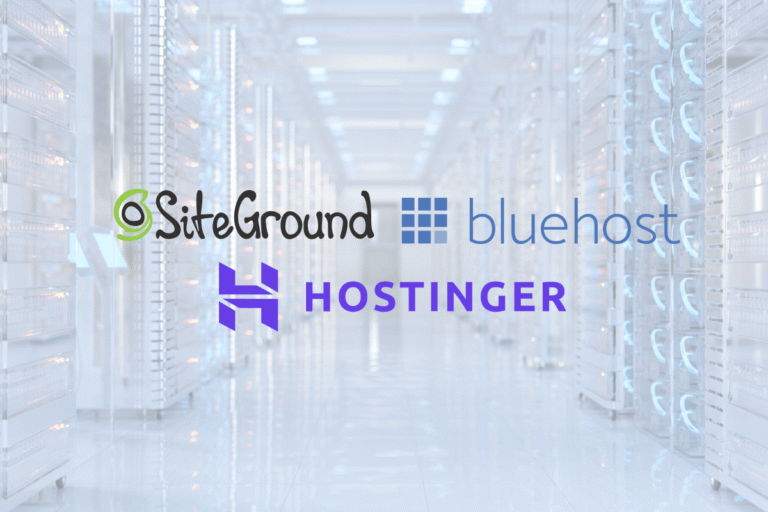
If a host advertises a “99.99% uptime” or the best hosting uptime guarantee on Earth, what does that actually get you when money’s on the line? Uptime SLAs look reassuring, but the fine print, and how you verify it, determines whether your site stays up and whether you’re compensated when it doesn’t. In this guide, you’ll learn how to read uptime SLAs the way an experienced admin or agency would, compare guarantees across hosts, and build a simple plan to measure real‑world availability before you commit.
Whether you’re launching a client site, scaling a SaaS, or running a blog that pays the bills, your goal isn’t a fancy percentage, it’s consistent availability your customers can feel. Let’s turn the marketing into math, the legalese into action, and help you pick a reliable provider with an uptime guarantee that actually protects you.
What Uptime Guarantees Really Mean
Uptime guarantees are contract promises, usually expressed as a monthly availability percentage, backed by service credits if the host misses the target. Common figures:
- 99.9% (“three nines”): up to ~43.8 minutes of downtime per month
- 99.95%: up to ~21.9 minutes per month
- 99.99% (“four nines”): up to ~4.38 minutes per month
- 99.999% (“five nines”): up to ~26.3 seconds per month
Those numbers sound tiny until you hit them at the wrong time, say, during a launch or a holiday sale. Also, most guarantees are limited: you usually get credits on your hosting bill, not cash, and only after you file a claim (often within 7–30 days). If your revenue loss outstrips the credit value, the “best hosting uptime guarantee” is only as good as your own contingency plan.
A practical way to think about it: the SLA is risk sharing. The host says, “We’ll aim for X%, and if we miss, we’ll discount your bill by Y.” Your job is to check how they measure X and when you’re eligible for Y. That’s where the details matter.
How To Read And Compare Uptime SLAs
Definition Of Uptime And Availability
Before you compare providers, confirm what counts as “available.” Some SLAs define uptime as the ability to make a TCP connection to the server. Better SLAs define it as successful HTTP 200/301 responses from your site’s hostname. The latter aligns with what you and your visitors care about.
Key questions:
- Which layer is measured, network reachability, web server, or app response?
- Does a partial outage (e.g., 500 errors, database timeouts) count as downtime?
- Is DNS availability included, or only the server IP?
Look for SLAs that consider end‑to‑end availability of your service, not just ping replies.
Measurement Windows, Monitoring Points, And Proof
“99.99% per calendar month” is common, but some hosts average across quarters, which can mask a bad month. You want month‑to‑month measurement with no rolling averages.
- Measurement window: Monthly is standard. Daily windows with monthly rollup are better for transparency.
- Monitoring points: Independent, multi‑region monitors reduce bias. If the host uses only its internal monitors, request details or plan to run your own.
- Proof: You’ll often need your own logs or third‑party reports (e.g., UptimeRobot, HetrixTools, Pingdom, StatusCake). Screenshots of your dashboard usually suffice.
Red flag: SLAs that only accept the provider’s proprietary status data and reject independent monitoring entirely.
Service Credits, Caps, And Claim Deadlines
Credits vary, but a typical tiering looks like:
- Availability < 99.9% but ≥ 99.5%: 10% credit
- < 99.5% but ≥ 99.0%: 25% credit
- < 99.0%: 50–100% credit (often capped)
Check:
- Caps: Many limit credits to the monthly fee for the affected service. If the outage wipes out a big paid ad campaign, the credit won’t cover it.
- Scope: Credits often apply to the impacted instance only, not add‑ons (CDN, backups, emails).
- Deadlines: You may need to file within 7–30 days of the incident with timestamps and logs.
- Exclusions: Scheduled maintenance, DDoS, force majeure, and customer errors are usually excluded.
Bottom line: Two hosts can both claim “99.99%,” but the one with clearer definitions, third‑party proof acceptance, and fairer credits is the safer bet.
The Fine Print: Exclusions That Matter
Scheduled Maintenance And Emergency Work
Most SLAs exclude scheduled maintenance, especially if they give 24–72 hours’ notice. That’s fair, but compare policies:
- Maintenance windows: Are they predictable (e.g., Sundays 1–3 AM in your region)?
- Counting rules: Some hosts exclude only pre‑announced work under X minutes per month: others exclude any maintenance of any length.
- Emergency work: Hardware swaps or security patches done “out of cycle” may be excluded if the host labels them “emergency.” Too-broad emergency definitions can become a loophole.
Tip: Ask for a history of maintenance frequency and average duration. Past behavior is a good predictor.
External Events: DDoS, ISPs, And Force Majeure
SLAs usually exclude:
- DDoS attacks that exceed included mitigation
- ISP or upstream carrier failures
- Natural disasters and force majeure events
Reasonable, sure, but you still care about resilience. What you want to see:
- Built‑in DDoS mitigation with specific thresholds
- Multi‑carrier network with automatic failover
- Published RFOs (Reason For Outage) for transparency
If a provider touts the best hosting uptime guarantee but has a single upstream carrier, you’re taking on network risk they won’t compensate.
Customer Misconfiguration, Limits, And Overages
If your site hits resource limits (CPU throttling, memory exhaustion, inode caps) and becomes slow or unresponsive, most hosts won’t count it as downtime. Ditto for application bugs.
What to confirm:
- Resource visibility: Do you get graphs and alerts for CPU/RAM/I/O so you can prevent throttling?
- Burst policies: Are short bursts allowed before throttling kicks in?
- Rate limits: Email, API, or request caps that could look like downtime to users.
Pro tip: On shared and managed WordPress plans, ask whether platform‑level issues (e.g., MySQL cluster incidents) are covered by the SLA. Some exclude “platform maintenance” even when it affects you.
Measuring And Verifying Real‑World Uptime
Independent Monitoring Versus Status Pages
Status pages are useful, but they’re curated by the provider and may lag. Run your own monitors from multiple regions. Free or low‑cost tools like UptimeRobot, HetrixTools, and StatusCake are fine: premium tools like Pingdom or Better Uptime add root-cause context and on‑call rotations.
Set checks for:
- HTTP(S) to your actual domain (not just IP)
- DNS resolution
- Optional: TCP port checks for app services (e.g., 3306 for MySQL if exposed, usually not on shared hosting)
Alert to email, SMS, and Slack. The sooner you know, the faster you can switch to a backup.
What To Track: HTTP, DNS, Network, And Regions
Track more than a single homepage check:
- HTTP response: 200/301 vs. 4xx/5xx with thresholds (e.g., 2+ failed checks across 2 regions → incident)
- Response time (TTFB and total load) to see performance degradation before downtime
- DNS health: Authoritative nameserver availability and propagation issues
- Network reachability: Packet loss or high latency spikes
- Regional variance: Uptime from US/EU/APAC vantage points: sometimes only one region is impaired
Tie monitors to a runbook: if uptime <99.9% in any calendar month, export reports for SLA claims.
How Long To Test Before Committing
Before moving a business‑critical site, run a 14–30 day pilot:
- Spin up the plan you’re considering and deploy a staging copy
- Monitor uptime and speed from 3–5 regions
- Trigger support with a few realistic tickets (migrations, SSL, backups) to assess response times
If the host claims 99.99% and your staging shows repeated brownouts or slow TTFB during your traffic hours, believe your data. Use that data to negotiate, or walk.
Beyond Uptime: Performance And Support Guarantees
Response Time, TTFB, And Page Speed Commitments
An uptime number alone doesn’t guarantee a fast site. Some providers now publish performance commitments like:
- Median TTFB targets from specific regions
- Cache hit‑rate expectations on managed WordPress or CDN tiers
- I/O and CPU minimums for bursty workloads
If a host won’t commit to any performance baseline, you can still hold them to your own thresholds: e.g., “TTFB < 300ms in region X during business hours.” Document it during your trial and use it as a renewal lever.
Network SLAs: Packet Loss, Jitter, And Throughput
For VPS, cloud, and dedicated servers, network SLAs often include:
- Packet loss ≤ 0.1–1% across backbone
- Jitter ≤ 5–10ms within a region
- 95th‑percentile throughput commitments on premium bandwidth
These matter for VoIP, gaming, live events, or API services where “up” but laggy is still a problem. Ask for historic graphs or PeeringDB/looking glass links to verify route quality.
Support SLAs: First Response And Resolution Targets
Support SLAs may specify:
- First response times (e.g., under 15 minutes for critical tickets)
- Escalation windows (L1 → L2 → engineering)
- Resolution targets and credits for missed targets
You don’t need 24/7 phone support if email and chat are fast and knowledgeable. During your trial, file a real migration or SSL ticket and clock the experience. If the support SLA is vague, treat the marketing claims as non‑binding.
Uptime Guarantees By Hosting Type
Shared And Managed WordPress Hosting
Typical SLA: 99.9%–99.99%.
What to watch:
- Noisy neighbors: Resource contention can cause slowdowns that don’t count as downtime. Choose hosts with isolation (cgroups/containers) and clear CPU/RAM allocations.
- Platform maintenance exceptions: Some managed platforms exclude database/cluster incidents.
- CDN and edge caching: Great for performance but often excluded from uptime SLAs: the core origin must be measured.
Good fit for: Blogs, local businesses, marketing sites, most small stores, especially when paired with independent monitoring and proper caching.
VPS And Cloud Instances
Typical SLA: 99.95%–99.99% for compute: separate SLAs for block storage, load balancers, and managed databases.
What to watch:
- Component SLAs: A 99.99% compute SLA plus a 99.9% storage SLA doesn’t equal 99.99% end‑to‑end for your app.
- Host node maintenance: Live migration versus reboots: whether maintenance windows are excluded.
- Zonal redundancy: Single zone vs. multi‑zone architecture has the biggest impact on actual uptime.
Good fit for: Agencies, SaaS, and stores that need predictable resources or custom stacks. Design for failure with multi‑AZ if budget allows.
Dedicated And Bare Metal Servers
Typical SLA: 99.9%–100% power and network uptime in the data center: hardware replacement time guarantees (e.g., 1–4 hours).
What to watch:
- Single points of failure: One server is one failure domain. Consider pairings with a failover IP, VRRP, or a secondary node.
- Replacement SLAs: “Four‑hour hardware replacement” is not a 4‑minute outage, plan for longer service restoration.
- Contract terms: Setup fees, minimum terms, and custom parts availability.
Good fit for: High, steady workloads, compliance needs, or specialized hardware. You own more of the reliability story: the SLA covers only what the provider controls.
Pricing, Credits, And Negotiation Tips
Credit Value Versus Real Cost Of Downtime
Service credits rarely match the true cost of being down. If your site makes $500/day and you lose an hour during peak, the revenue hit could exceed a month of hosting. Treat credits as a nice‑to‑have, not insurance.
Do this math:
- Estimate revenue per hour or lead value
- Map risk windows (campaigns, launches)
- Decide if a higher‑tier plan or redundant setup is cheaper than potential losses
Often, the best hosting uptime guarantee for you is a stacked approach: a reliable host + CDN + health checks + failover.
Negotiating Better SLAs As You Scale
You have leverage as you grow. Ask for:
- Higher credits for sub‑99.9% months
- Acceptance of third‑party monitoring for proof
- Tighter support response times on higher tiers
- Maintenance windows aligned to your traffic patterns
- Multi‑AZ or cross‑region options with consolidated billing
Bring data from your trial or past incidents. Specifics (“three brownouts between 10–11 AM ET, average TTFB 800ms”) beat vague complaints.
Reading The Fine Print In “Unlimited” Plans
“Unlimited” usually means “within fair use.” Look for:
- I/O and CPU limits hidden in acceptable use policies
- Inode caps (total files) that stop backups or media-heavy sites
- Backup retention specifics and restore fees
- Email sending limits (per hour/day) that can break newsletters
If any of these limits cause your site to slow or error, they typically don’t count toward downtime. That’s fine, just make sure the plan actually fits your usage profile.
Conclusion
Uptime SLAs are not magic shields, they’re contracts with math. The best hosting uptime guarantee for you is one you understand, can verify independently, and can backstop with a simple failover plan. Read how “available” is defined, check the exclusions, and verify performance on your own monitors before you migrate anything critical.
If you remember nothing else, remember this:
- Compare definitions, not just percentages
- Monitor your site from multiple regions and keep monthly reports
- Value credits, but design for resilience
Do that, and you’ll choose a host that’s not just good on paper, but reliable when it counts.
Key Takeaways
- Don’t be dazzled by “99.99%” or claims of the best hosting uptime guarantee; convert it to minutes and remember SLAs usually pay bill credits, not your true losses.
- Pick providers that define availability at the HTTP 200/301 level and accept independent, multi‑region monitoring as valid proof.
- Insist on month‑to‑month measurement, transparent credit tiers and caps, clear exclusions (maintenance/DDoS/customer error), and strict but reasonable claim deadlines.
- Run a 14–30 day pilot with checks for HTTP, DNS, regional uptime, and TTFB, and test support response to validate marketing with real data.
- The best hosting uptime guarantee works only with resilience you control—use CDN, health checks, and multi‑AZ/failover because component SLAs don’t equal app‑level availability.
- As you grow, negotiate higher credits below 99.9%, acceptance of third‑party reports, traffic‑aligned maintenance windows, and baseline performance targets.
Frequently Asked Questions
What does a 99.99% uptime SLA actually guarantee?
A 99.99% uptime SLA allows about 4.38 minutes of downtime per month. If the host misses that target, you typically receive service credits (not cash) after filing a claim within a set window. Credits are often capped at the affected service’s monthly fee, so plan for redundancy.
How do I compare uptime SLAs to find the best hosting uptime guarantee?
Look beyond the percentage. Prefer SLAs that define uptime as successful HTTP 200/301 from your domain, measure month-to-month (no rolling averages), accept third‑party monitoring, and offer transparent credit tiers. The best hosting uptime guarantee also clarifies maintenance rules, exclusions, and claim deadlines you can realistically meet.
Which exclusions can void an uptime SLA claim?
Common exclusions include scheduled maintenance, labeled “emergency” work, DDoS beyond included mitigation, ISP/carrier failures, force majeure, and customer-caused issues like resource throttling or app bugs. Credits often exclude add‑ons (CDN, email). Review maintenance predictability, emergency definitions, and platform-level incidents to avoid unpleasant surprises.
How should I verify a host’s uptime before committing?
Run a 14–30 day pilot and monitor from multiple regions using tools like UptimeRobot, HetrixTools, Pingdom, or StatusCake. Check HTTP to your domain, DNS health, response times (TTFB), and regional variance. Set thresholds and keep monthly reports and timestamps to support potential SLA credit claims.
Is 99.999% uptime realistic for small sites, and what would it take?
Five nines usually requires redundancy you control: multi‑AZ or multi‑region hosting, health checks, automatic failover, resilient DNS, and tested runbooks. Shared or single‑server setups rarely achieve it consistently. Expect higher costs and complexity; often, a robust 99.95–99.99% plus failover/CDN delivers better value.
Do uptime SLAs include performance guarantees like TTFB, or should I negotiate them?
Most uptime SLAs cover availability, not speed. Some providers publish performance baselines (e.g., median TTFB by region) on premium tiers. If the best hosting uptime guarantee lacks speed commitments, negotiate performance targets during trials and document evidence. Use them as renewal leverage or choose a host that commits.


